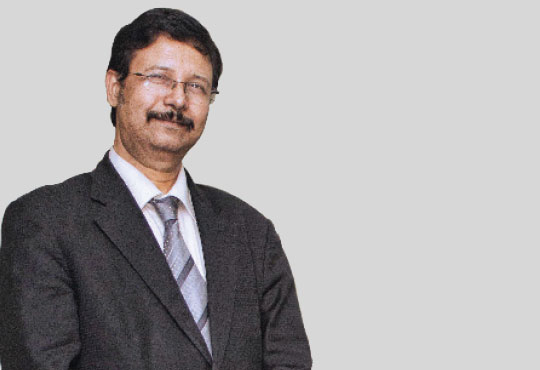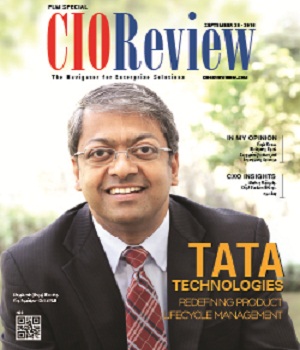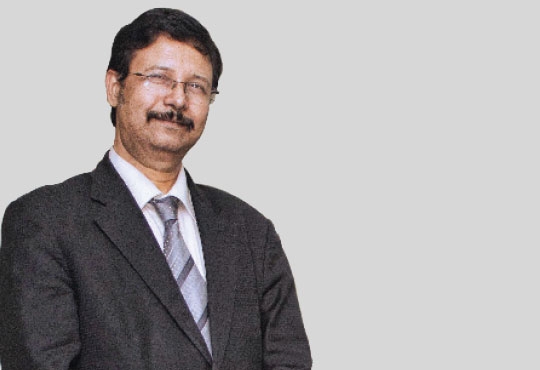
The Monumental Shift in Traditional PLM Centric Business
Dr. Chandan Chowdhury, Managing Director, Dassault Systemes India
 A few years back, the companies were not connected with the end consumer. Today, a new dimension of companies can be seen. They are making the end consumers the center. This shift is happening because of the process of innovation which is being connected with the end consumer. In a competitive market, what becomes significant is the experience offered to the end consumer. As we live in the age of experienced economy, it’s important that the process of innovation in companies do not remain as a stand alone initiative, but also connects with the end consumer, keeping the experience as the key focus.
A few years back, the companies were not connected with the end consumer. Today, a new dimension of companies can be seen. They are making the end consumers the center. This shift is happening because of the process of innovation which is being connected with the end consumer. In a competitive market, what becomes significant is the experience offered to the end consumer. As we live in the age of experienced economy, it’s important that the process of innovation in companies do not remain as a stand alone initiative, but also connects with the end consumer, keeping the experience as the key focus.
Factors Leading to the Transition of Traditional PLM
The necessity of collaboration of the company, with value chain, with its customers was an important aspect that led to the birth of Product life cycle management and making it synonymous in the industry. It’s the design of the product that needs to be validated by being manufactured so that it could be maintained by the end consumer. Thus, PLM is nothing but merely a collaboration of the design of the product, with manufacturing and maintenance of the product.
With the changing culture, the impact and its effect of media on the business, have changed the customer’s perspective. It’s not a PLM solution that a consumer demand anymore, it’s the significantly unique experience of PLM to go with it is what they require. The PLM today, is moving beyond traditional.
Here are the nine questions that can bring about a significant change in the company through PLM offering to provide
UNIQUE CUSTOMER EXPERIENCE:
a. How do we transform the customer experience and engagement process?
b. How do we reduce the total cycle time for new product development?
c. How do we introduce new variants faster than the competition?
d. How do we transform the way we collaborate the various members of the value chain to reduce the cost, to increase quality, and to achieve one time delivery?
e. How do we significantly improve quality?
f. How do we reduce the cost significantly?
g. How do we reduce physical prototype and make it zero?
h. How do we improve the customer buying experience?
i. How do we accelerate the innovation process?
Connectivity is Paving Way for Crowdsourcing
Mobile devices, social media and cloud, are going to make a huge difference, its impact is already being seen and in coming times , it would change our world as we know it. If in our country, we are to leverage all of them with the scientific applications, which would be a simple initiative, but one that would turn the table of negative sentiments about PLM into a positive one. In the internal business, for managing our own business, we use mobile devices, these devices if collaborated with scientific applications today can not only leverage functionality of business but will also help in the production process. Many companies are aware of the challenges of PLM, but the percentage of companies, that are actually using scientific applications to accelerate the process of innovation, are very less. Again, if the sentiment of producing an expensive product is changed to bringing down the cost of a product without compromising the quality or delivery of superior quality, using the safe and reliable materials, then that would significantly change the face of our country’s economy.
Social media, mobile devices, and cloud all put together is giving us the lever for crowd sourcing. In a country like India, where one and a half billion engineers are working, also there are the experts in physics, maths, which is more than in the US and China combined together, can give insights that will not only help business innovate but will transform it. This is possible through Crowdsourcing, a new concept, that has the ability to deliver functions in months, which otherwise would have taken years.
The Truth about Complex PLM
With traditional PLM, the companies were and are still hesitant in adopting PLM, owing to applications being not easy to use. PLM has gone beyond the traditional. The taboo complex norms of PLM is expensive, takes long time to deploy and cannot coexist, are all talk of the past. Agile companies like us have been able to eradicate the fear of adoption. It has even succeeded in making PLM addictive for the clients, by making it more user friendly and intuitive, thus, bridging the traditional mindset of the customers with the new and improved PLM.
CIO Viewpoint
Why Foolproof Facial Recognition Is Key Against...
By Joseph Sudheer Thumma, Global CEO & MD, Magellanic Cloud
National Technology Day 2025: Powering Progress...
By CIOTech Outlook Team
Aligning IT Roadmap with Business Objectives: A...
By Subhash singh Punjabi, CISO & Head Enterprise Architecture, Deepak Fertilisers & Petrochemicals Corporation Ltd
CXO Insights
The Monumental Shift in Traditional PLM Centric...
By Dr. Chandan Chowdhury, Managing Director, Dassault Systemes India
Benchmarking Report Administering organizations...
By Nagi Kasinadhuni, GM, Communications, APAC, Dimensions Data India
Embracing Cloud-Communications for a...







